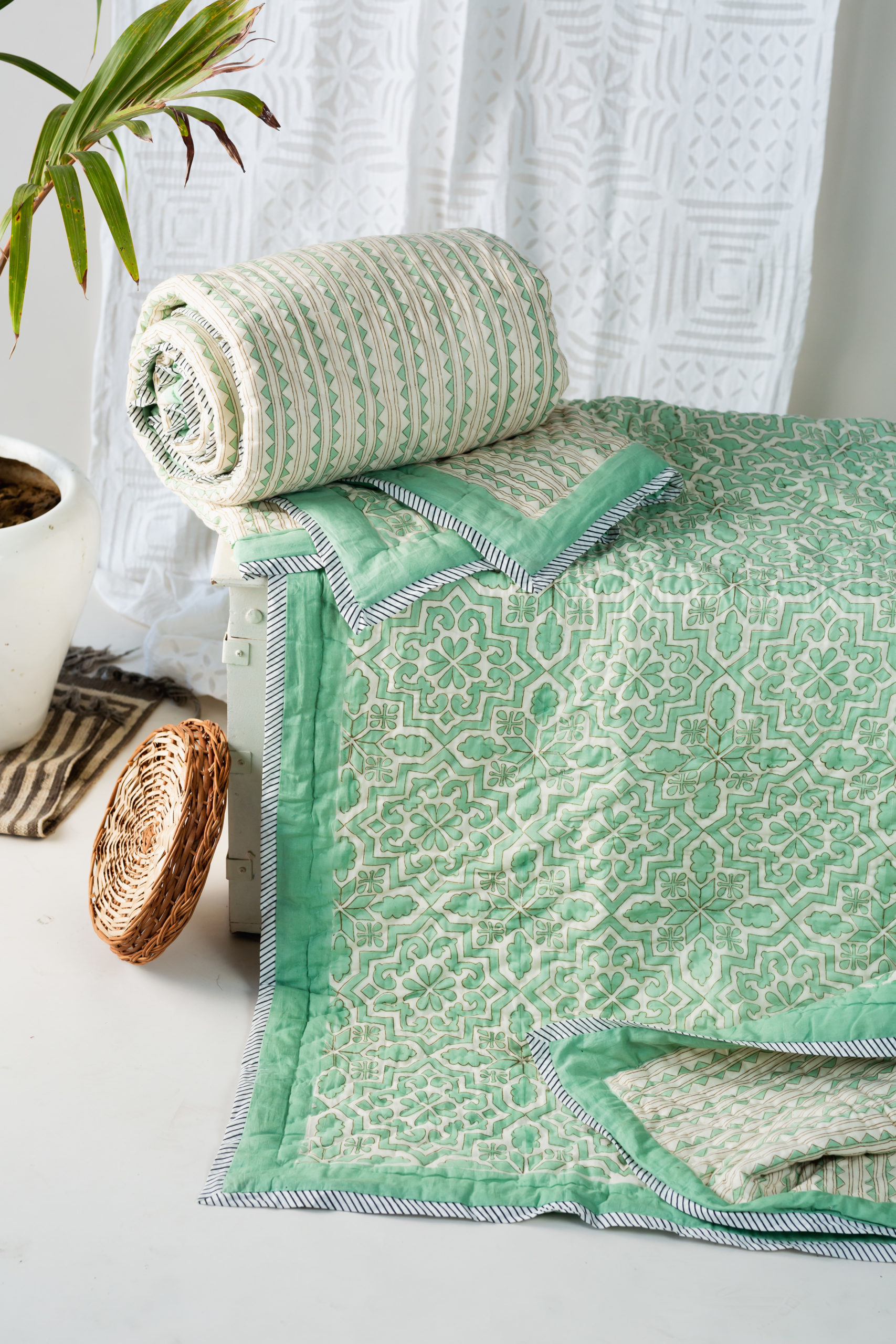In the 16th century, way before the West jumped onto the bandwagon of Veganism, Jaipur was experiencing a religious revolution spearheaded by Vishnuism. Now referred to as Vaishnavism, the followers of this Hindu philosophy are ardent followers of Lord Vishnu. And, worships the 10 Avatars of Lord Vishu. And most importantly, they are strictly vegetarian and against animal cruelty. Resultantly, leather from animal hide, feather from birds, and wool from reared and sheared sheep quickly became an outlaw in the region.
However, the bone-chilling desert nights started to become unbearable for the nomadic Northerners of Rajasthan. As the old adage goes, necessity is the mother of invention. So, the need for a cozy blanket that kept one toasty through the night; while being lightweight enough to carry with ease on the nomadic exploration birthed Jaipuri Razai.
Razai – A Promise of Contentment
The term “Razai” comes from the Persian term “riḍā” which roughly translates to contentment and pleasure. In Hindi, quilts (often handmade) are known as Razai. And, those that are made the traditional way in Jaipur are, appropriately, termed Jaipuri Razai or Quilt from Jaipur. Once you experience the comfort of our Jaipuri Razai, you will know why it comes from the term “riḍā”.
The Making of the Muse
The secret of the cozy warmth of lightweight Jaipuri Razai is the science of insulation. And, here’s what goes down into making these glorious comforters.
- Hand Block Printing
Meters and meters of lush cotton are washed thoroughly, ironed and, stretched across wooden printing frames. Artisans concoct the most beautiful mix of colors from high-quality natural pigment. Wooden block engraved with intricate oriental motifs are dipped in the paint and stamped on the unblemished fabric with skilled dexterity.
The exquisite block-printed fabric becomes the top layer of the Razai.
- The Carding of Cotton
Heaps of cotton lie by the sides of skilled hand carders are they use a simple device with rows of teeth and paddles to card the cotton. The fibers are passed through the carder multiple times by hand to fluff them up. This incorporates insulating air onto the natural fiber and helps in extracting impurities. Clumped-up fiber turn in cloudy goodness right in front of our eyes. It is the carding that gives Jaipuri Razai its signature lightweight feel.
- Layering
The carded cotton is layered evenly across the shell of the Razai. Then, the entire quilt is overlaid with small stitches done by hand to keep the cotton evenly distributed without any lumpiness or sagging. Even with years of use. It also elevates the aesthetic appeal of the Razai. The art of hand stitching the quilt is called “Tagaai” in Hindi.
The Best Features of Kessa’s Jaipuri Razai
- Hypoallergenic
Even those with the most sensitive skin can revel in the comfort of this pure cotton beauty.
- Lightweight
Unlike regular blankets and quilts, Jaipuri Razai doesn’t make you feel claustrophobic with its weight.
- All season blanket
Keep the bite of winter and the midnight chill of air conditioning in summer at bay with a single, versatile blanket.
- Aesthetic
The charm of intricate hand block printed motifs can elevate the aesthetic of your bedroom in a jiffy.





